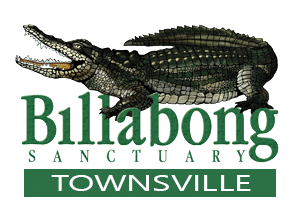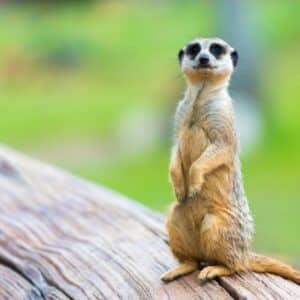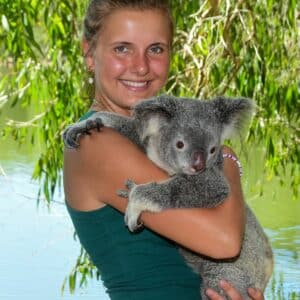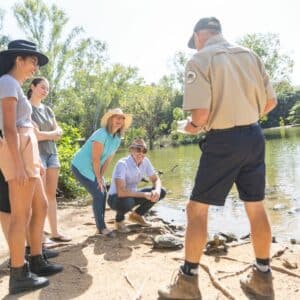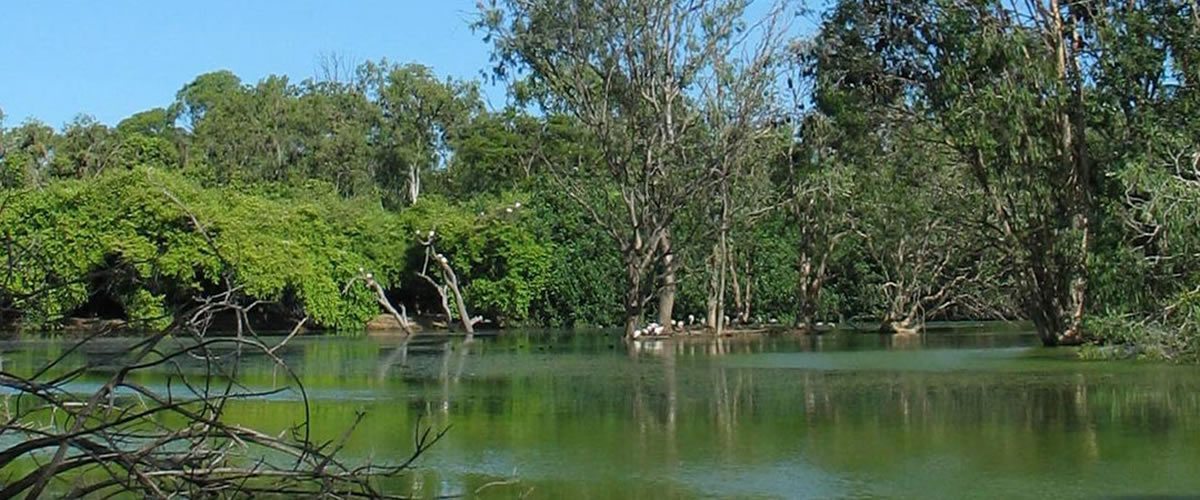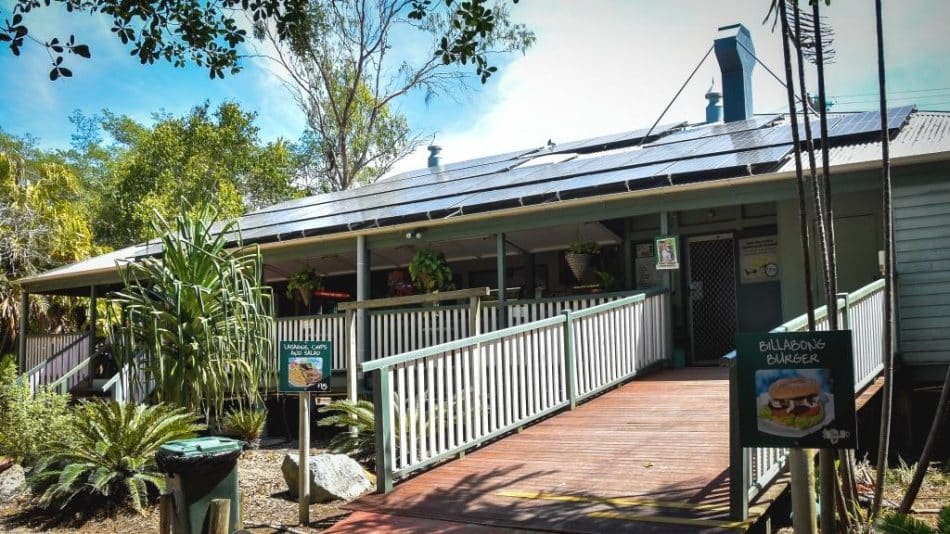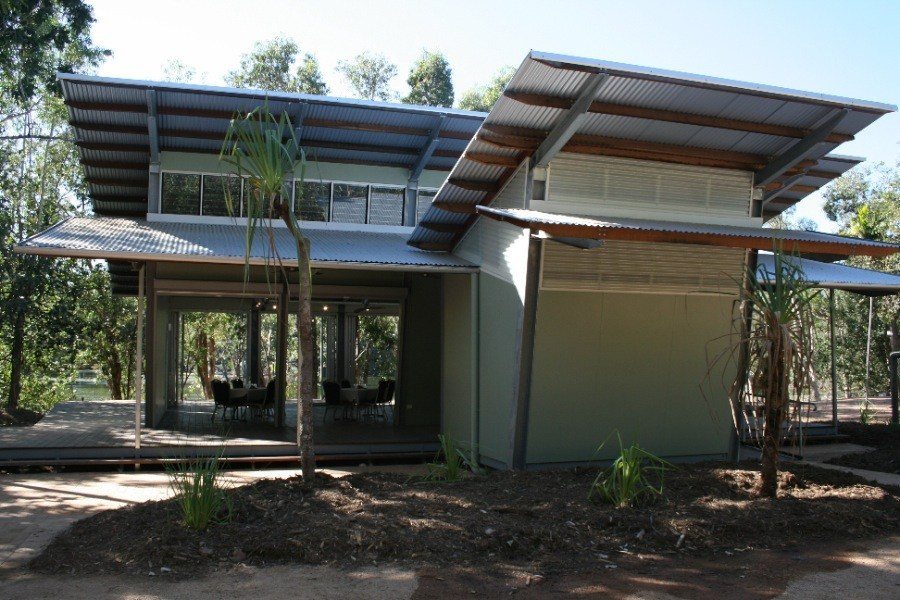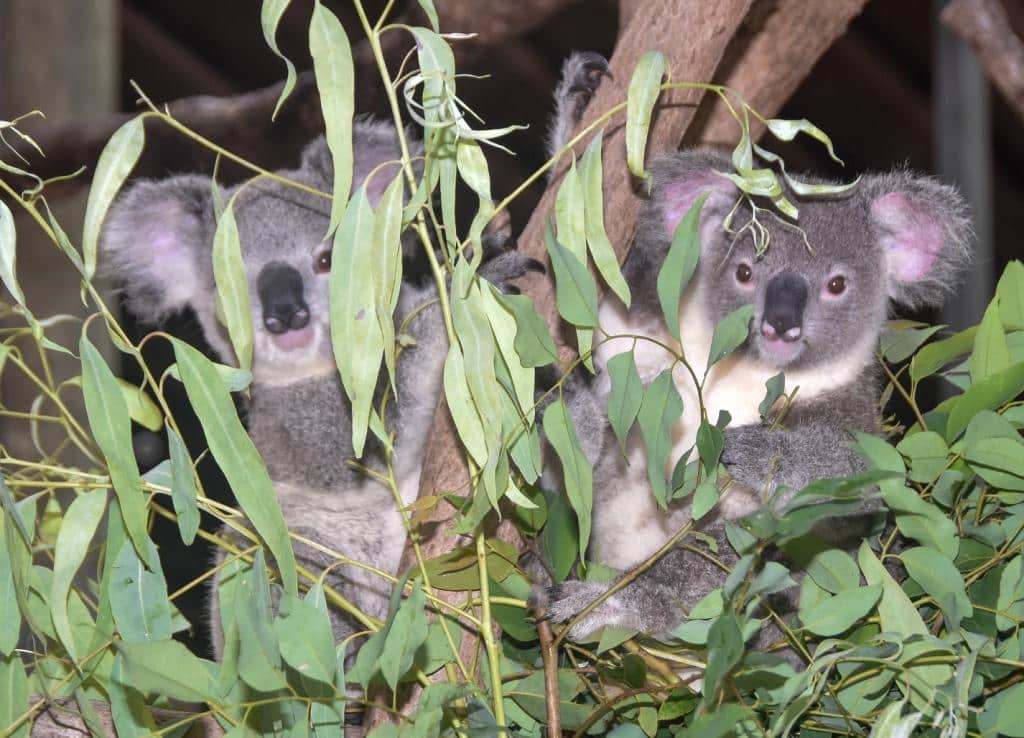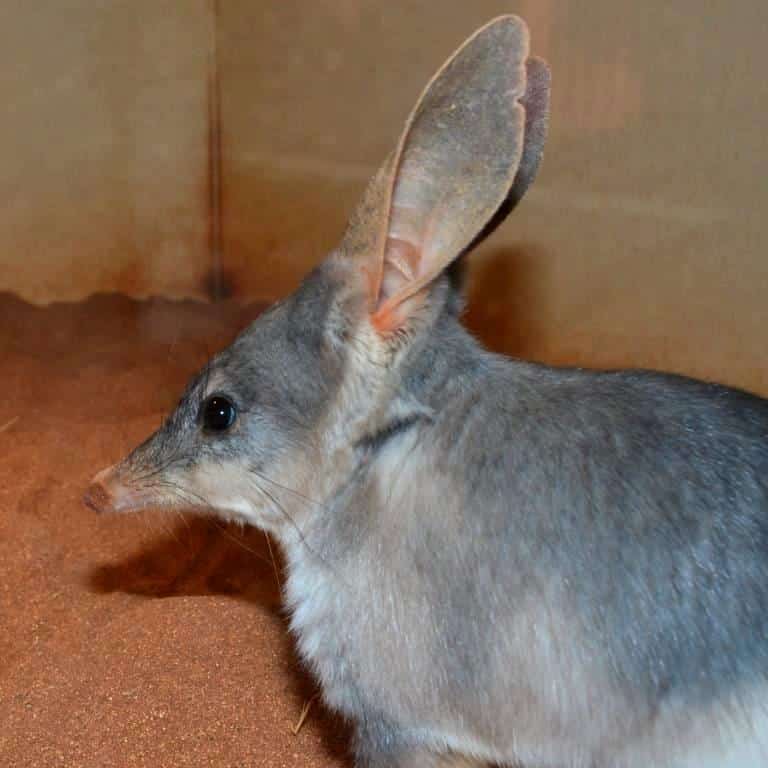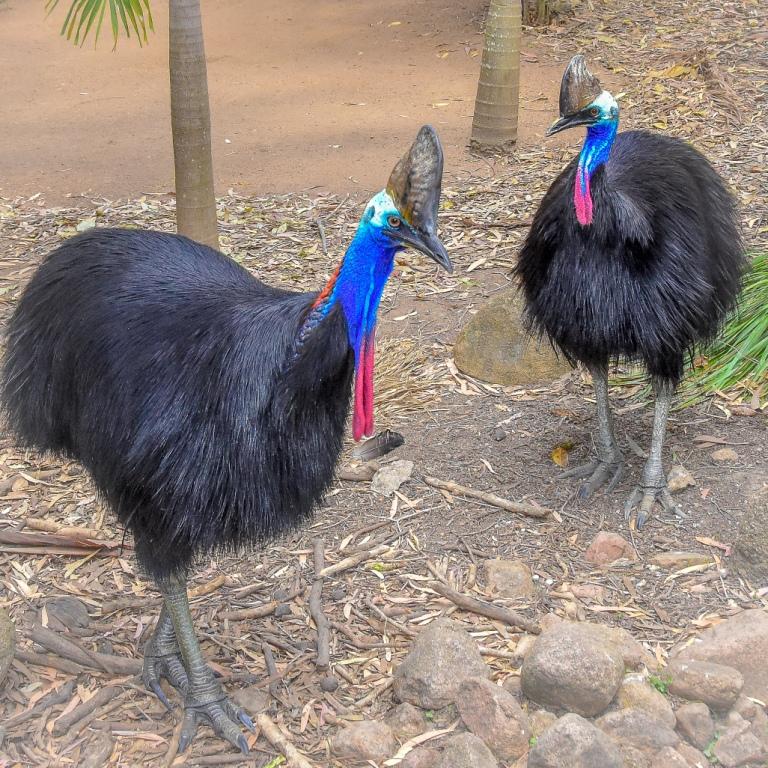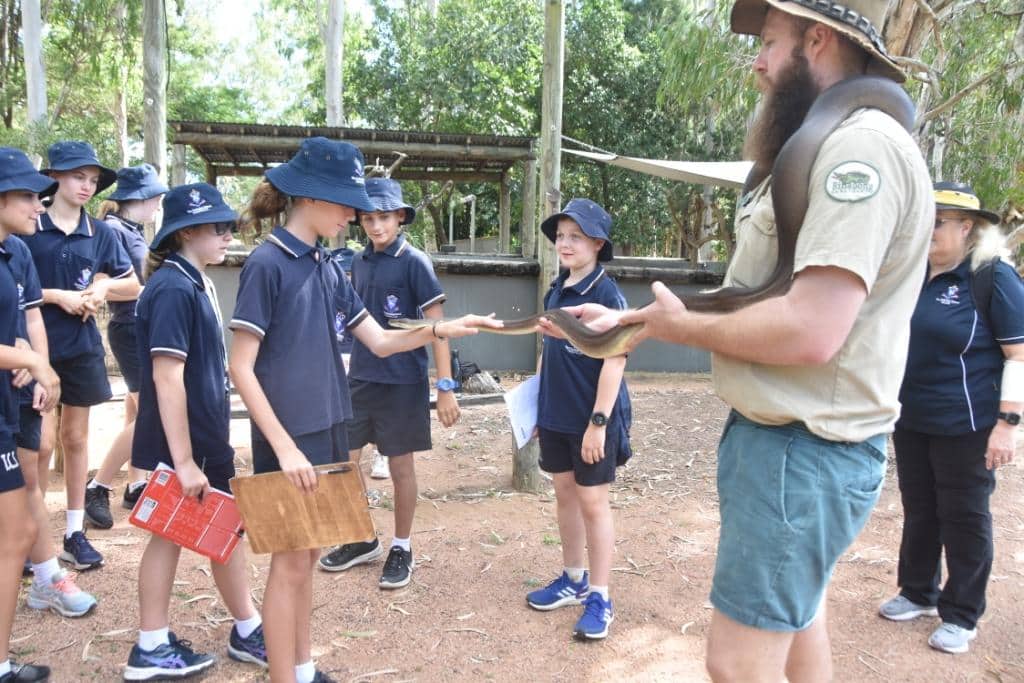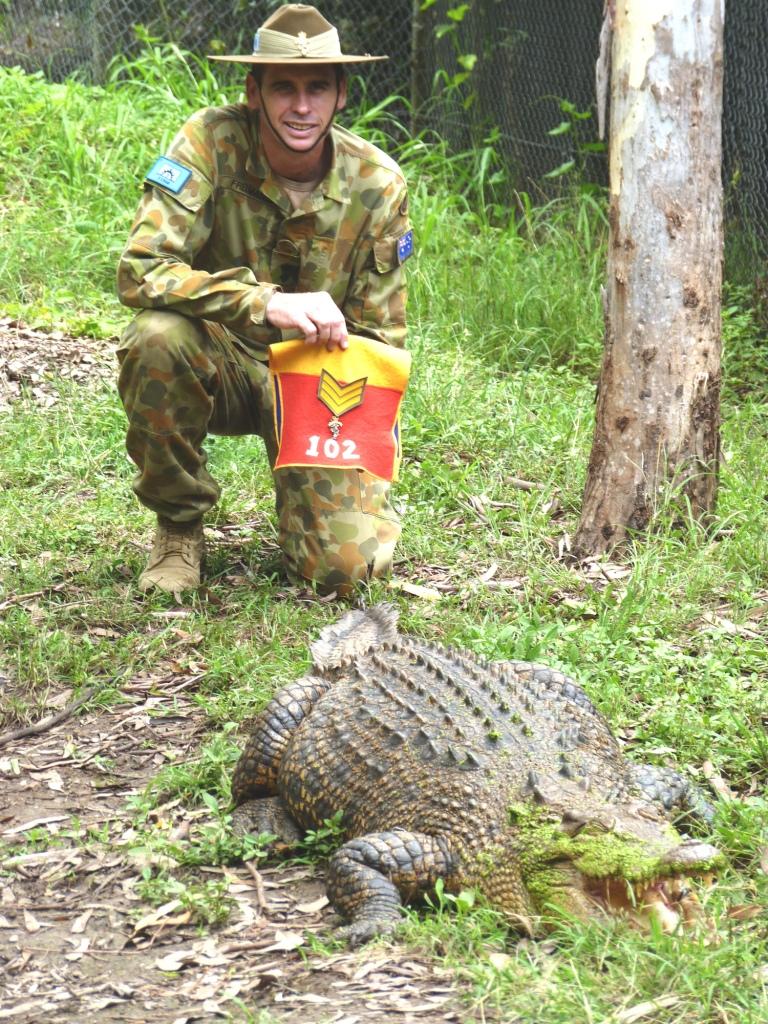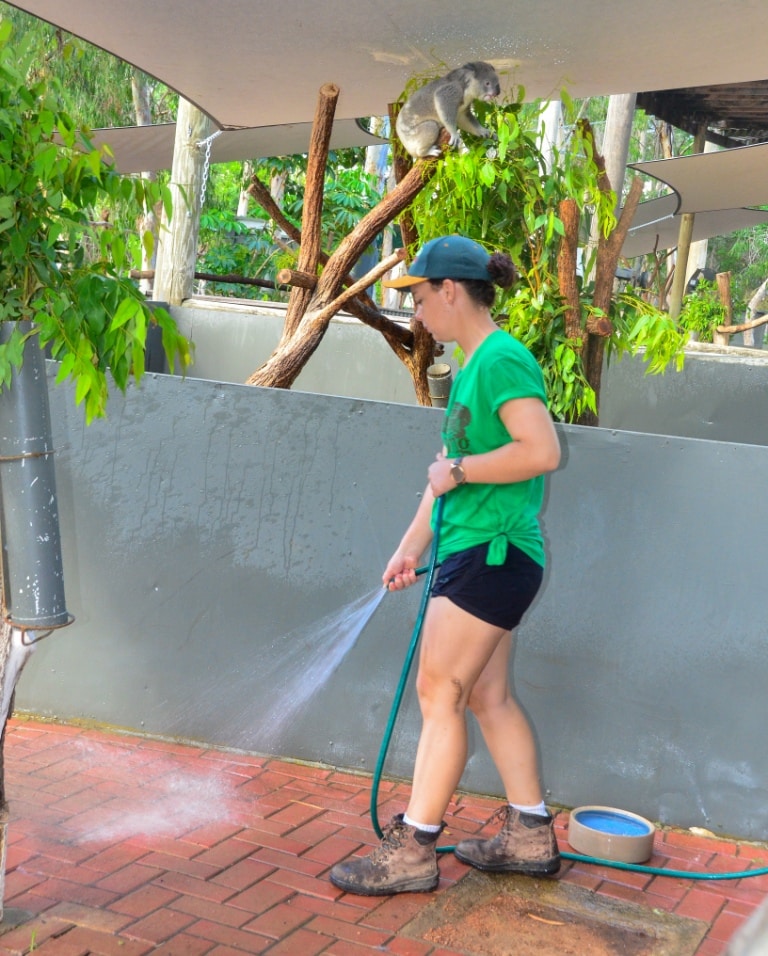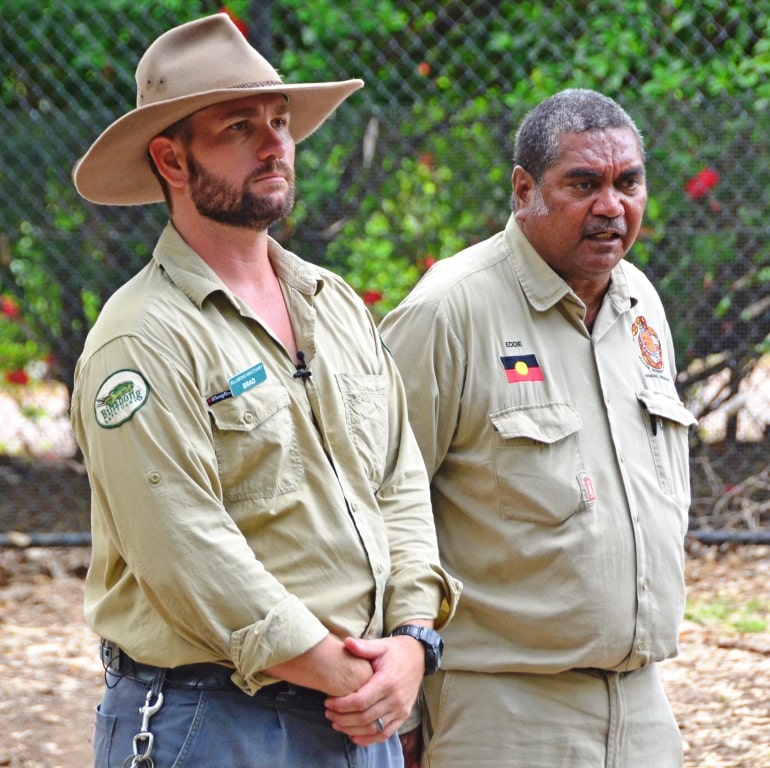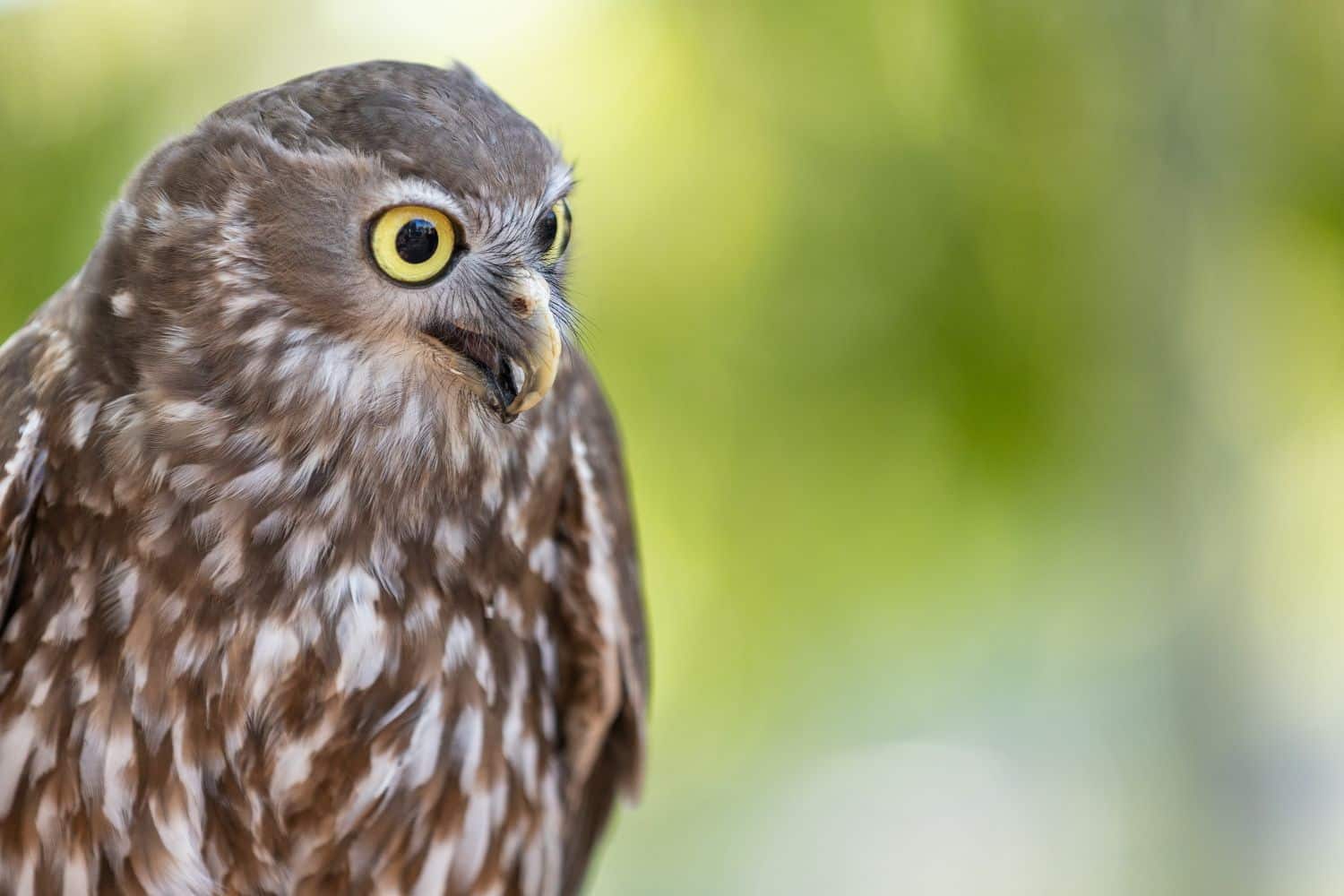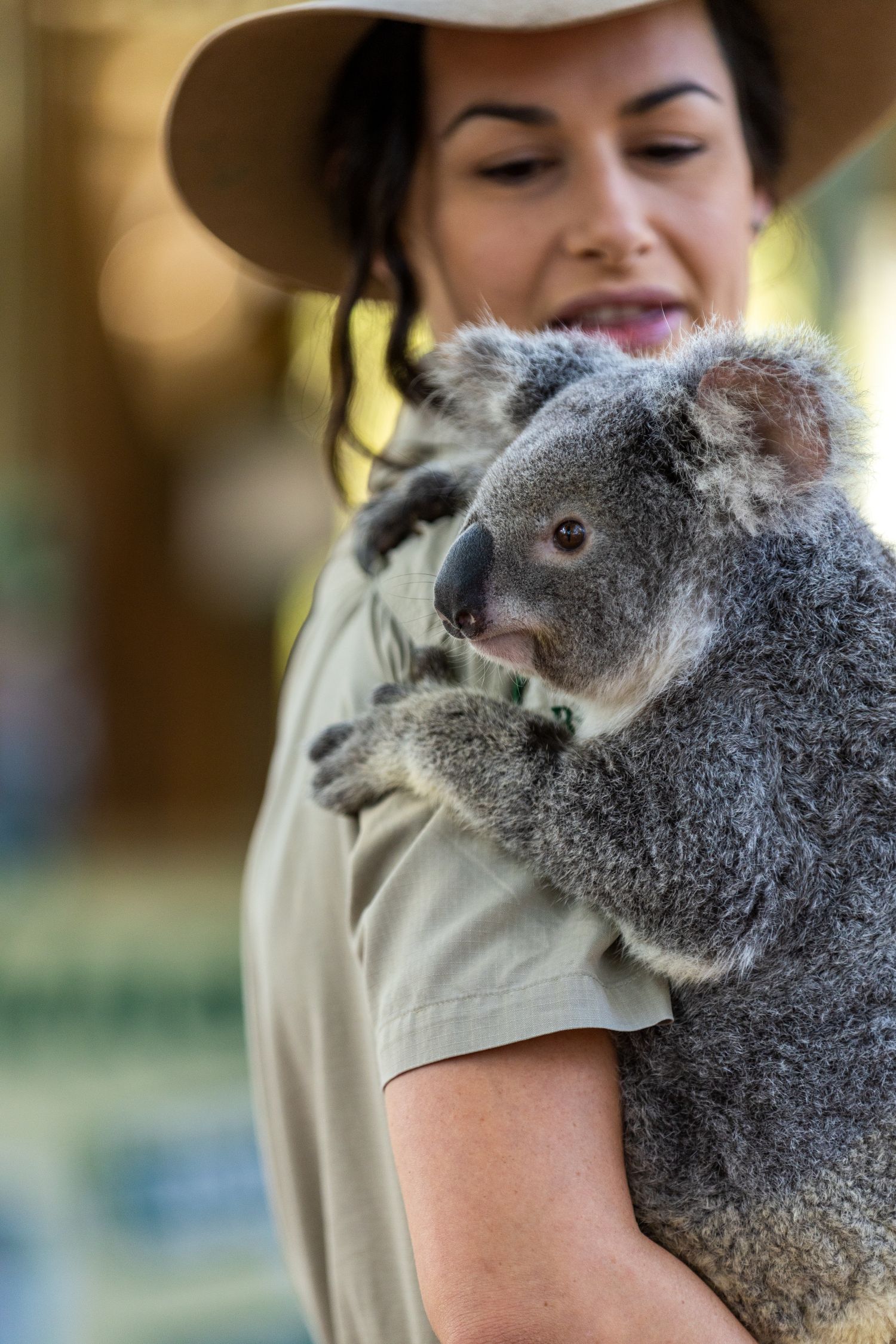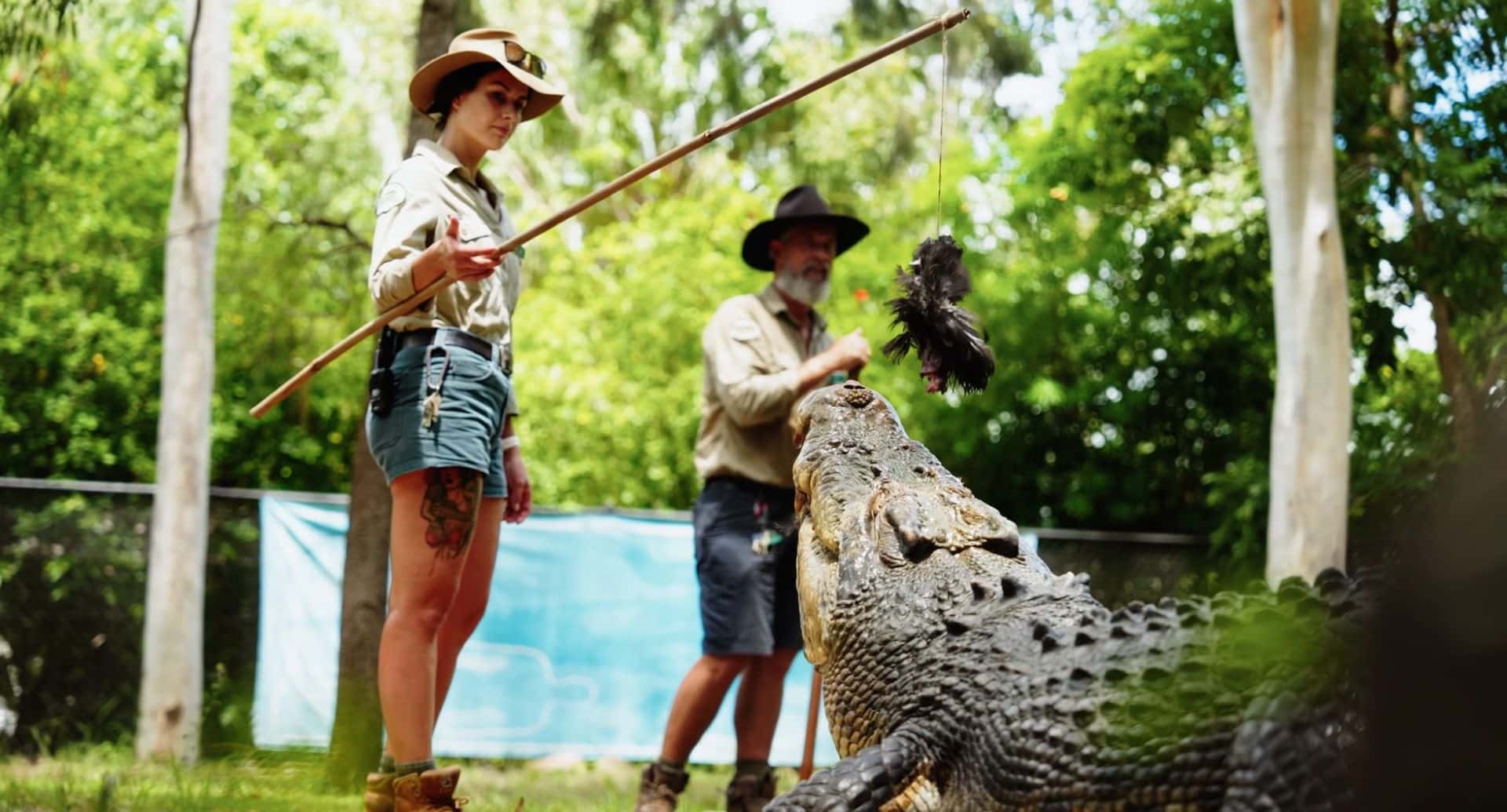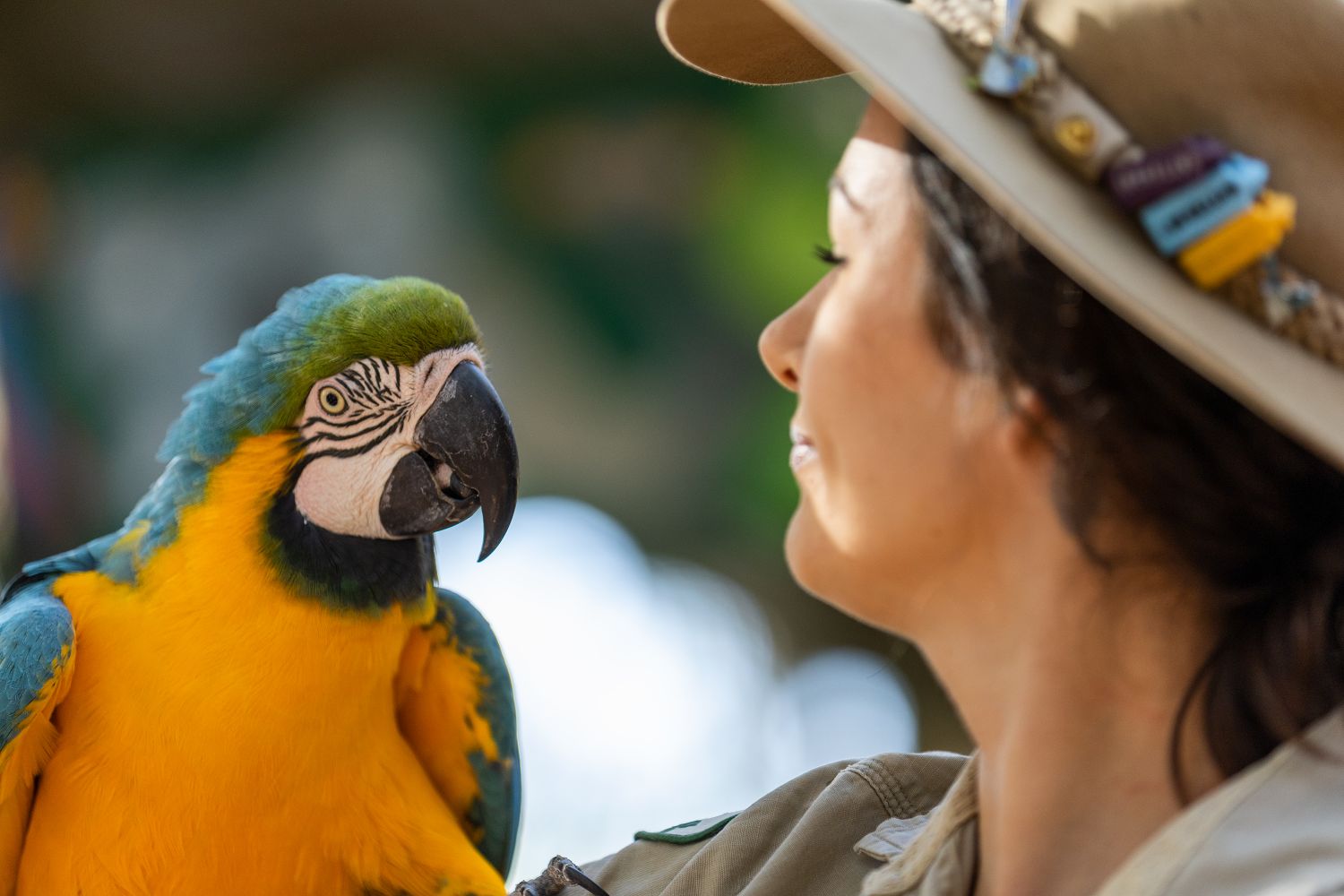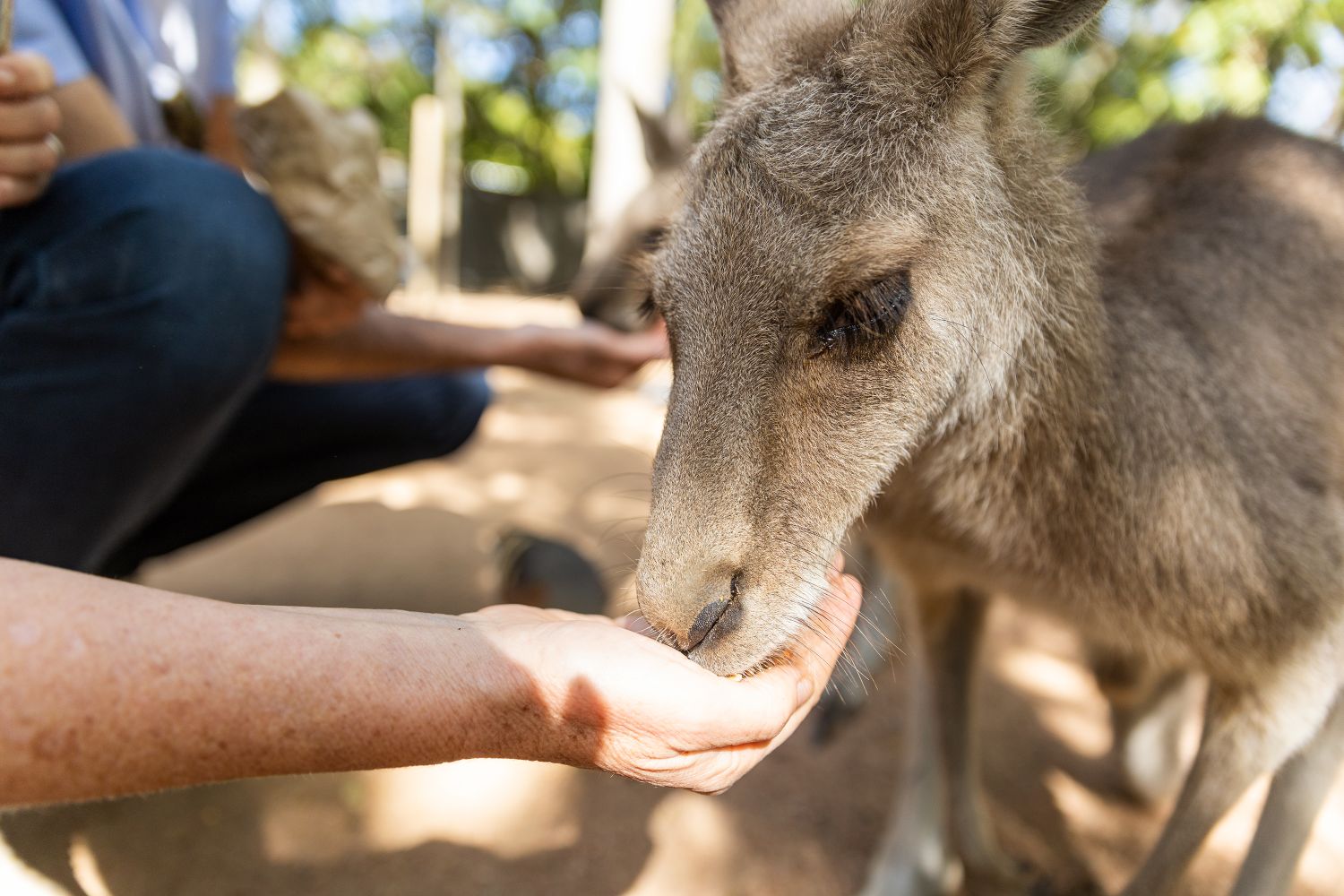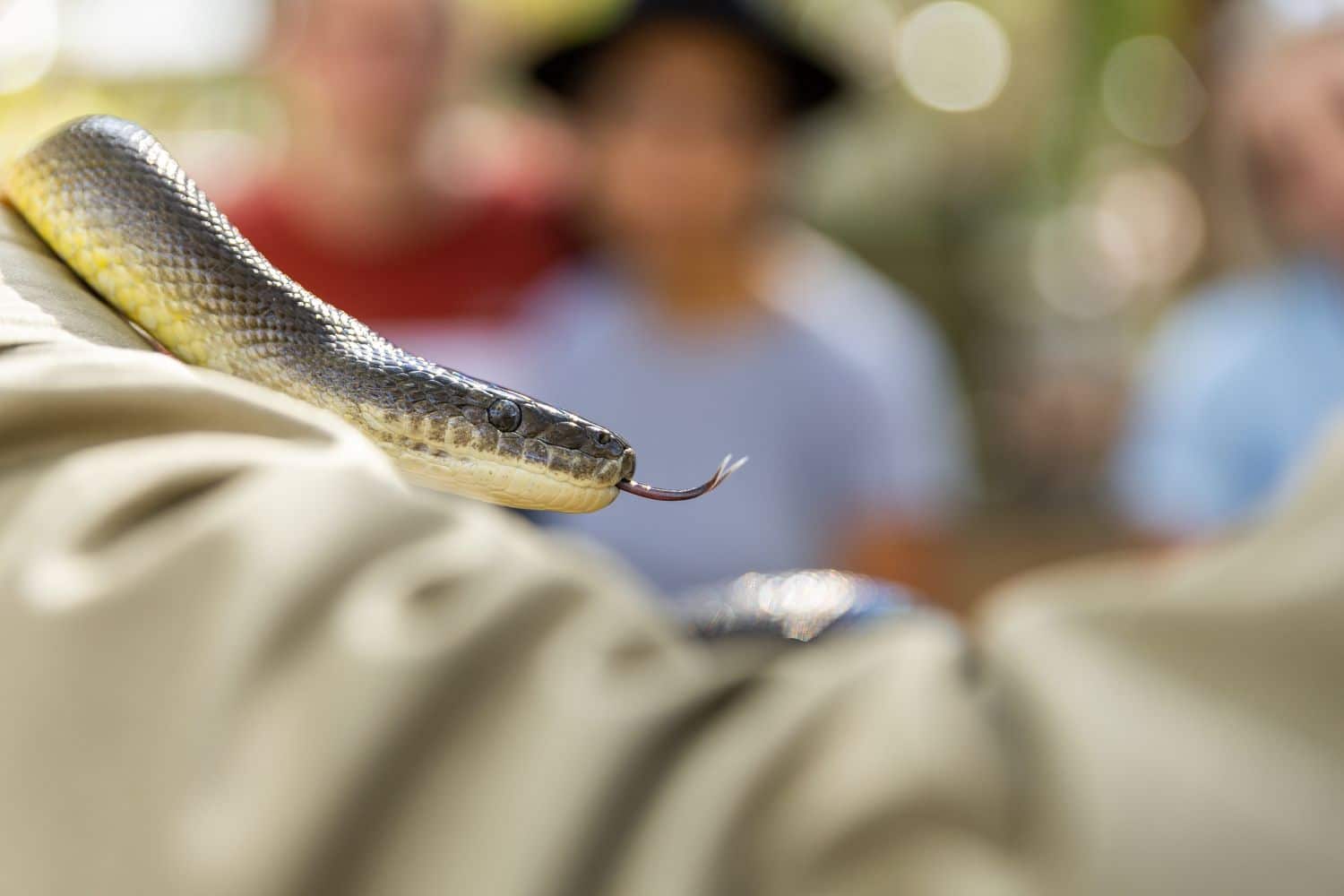Using Resources Wisely
How we are reducing our carbon footprint:
– To offset our use of non-renewable sources of energy, we installed a 25kw solar power system, with 66 solar panels on the roof of the food preparation building, and 92 solar panels on the roof of the reception/cafe building.
– The reception building and Melaleuca Function Centre are designed to take advantage of natural ventilation. Neither is air-conditioned.
The reception building (Shop) is a replica Queenslander, set on stumps to increase ventilation, and with wide verandahs on two sides. The building is cooled by ceiling fans only. Visitors may dine on the shaded verandahs or in the shaded picnic areas overlooking the billabong.
Melaleuca on Billabong is our modern function centre, available for school groups, family parties and corporate functions. Designed by the award-winning Troppo Architects, Melaleuca on Billabong is energy efficient and environmentally sensitive. With spacious verandahs on three sides and a soaring roofline, this versatile, all-weather building harmonises with the natural beauty of its surroundings.
– Thousands of mature trees, first planted 40 years ago when the park was established, provide shade along the pathways that encircle the billabong and around the show areas and animal enclosures.
– Chickens are raised on the premises for feeding our crocodiles.
– Landscaping uses native plants with minimal water requirements, and garden beds are mulched.
– We have established an on-site plantation of rainforest trees as a food source for our Lumholtz’s tree kangaroo.
– Cardboard and drink containers are collected for recycling.
– We purchase fruit and vegetables for our animals from Lamberts Fresh Produce in Townsville who support local growers from Sarina to Charters Towers and up to the Tablelands.
– All the eucalyptus for our koalas is grown on our local plantation at Stuart Correctional Centre, just 4km away on the Bruce Highway. There are 7000 trees comprising their five preferred species so we can provide fresh daily leaves for our koalas without harvesting from any wild trees.
Uneaten leaves and branches are recycled in aviaries, and then used for mulch on garden beds.
Contributing to the conservation of the environment
Billabong Sanctuary is proud to be an Accredited Member of ZAA (Zoo and Aquarium Association). We undertake positive animal welfare, beyond the minimum standards enforced by government departments, while providing opportunities for visitors to learn about wildlife and environmental conservation.
– We never source native animals directly from the wild. Most animals in our collection have either been captive bred or traded from other wildlife parks. Some are orphaned or rescued animals deemed unsuitable for release back into the wild. They serve as ambassadors to promote conservation.
– Billabong Sanctuary is working with Save the Bilby Fund to help save the endangered greater bilby from extinction. As well as creating awareness of this little-known species, we care for a small breeding population of bilbies. We have already sent one female bilby to Charleville to join other bilbies in a captive breeding programme, for eventual release into a predator-proof environment.
– Billabong Sanctuary is a proud partner in the Southern Cassowary Captive Management Programme. The aim is to maintain a healthy breeding population in the 32-member wildlife parks and zoos throughout Australia.
Visitors to our resident cassowaries, Hope and Troppo, learn about the threats facing this magnificent bird and how they can contribute to their conservation. Captive populations also enable vital research into physiology and husbandry.
– Waste from the amenities block, kitchen and food prep building is treated in Biosystem tanks and grey water is used for irrigation.
– Wastewater from croc ponds is contained in settling ponds, preventing run-off into nearby White’s Creek.
Helping Local Communities
INTERPRETATION AND EDUCATION
– All our Rangers are passionate about conservation of native wildlife and ecosystems.
Daily talks are fun and interactive, but also draw attention to current issues such as loss of habitat and introduced predators.
– Schools in the surrounding area are invited to bring students to our ‘living classroom’. Lesson plans are targeted to each grade level and follow the Australian Curriculum for Science.
– James Cook University students conduct ongoing research programmes within the park.
WORKING WITH LOCAL COMMUNITIES
– Billabong Sanctuary is home to two mascots of ADF battalions based at Jezzine Barracks: Pte Hope Audacious, (southern cassowary) mascot of 11th Combat Service support Battalion and Sgt Soult Water Croc (Snappa), mascot of 102nd Field Workshop, 3rd Combat Service Support Battalion.
Members of ADF receive a 10% discount on entry. Families visit Billabong Sanctuary for family fun days, and members have, from time to time, donated labour to refurbish or build new enclosures.
– Whenever possible, we employ local residents and purchase goods and services locally.
– We welcome veterinary students from James Cook University on volunteer work placements.
– We were active in a local community group which successfully lobbied against a proposed quarry within 3km of the Sanctuary.
– Our eucalyptus plantation at Stuart Corrective Services Farm plays a role in the rehabilitation of low-risk prisoners who tend to the trees.
– We support local educational and medical charity fundraisers, such as school fetes and the Biggest Morning Tea.
CULTURAL RESPECT AND SENSITIVITY
– We created signs displaying the local dialect names for our animals with the help of the Indigenous Cultural Centre.
– When a problem crocodile of over 4.5 metres in length is removed from the wild it is considered an iconic crocodile, and local elders of the Wulgurukaba people are consulted before it is relocated. Jupiter is an example of a locally caught crocodile, captured off the Strand in Townsville. After consultation, Billabong Sanctuary was chosen by the elders as his new home because of our commitment to education and conservation.
